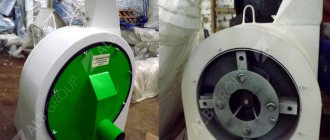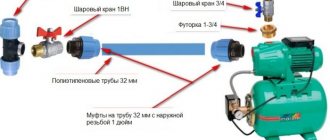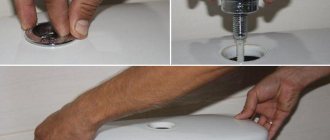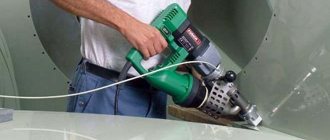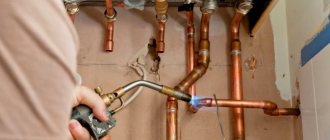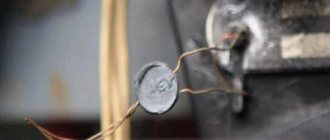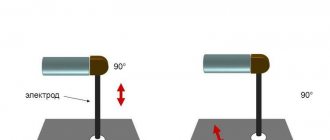Having your own country house or dacha, sooner or later you ask yourself the question: [how to weld a gate] so that it is not only functional, but also beautiful?
From what material and how to weld the gate, where to start?
In order not to rack your brains, you can use the services of specialists, or you can, without spending so much time, study the technology, understand that everything is quite simple, and do the work yourself.
Profile pipe as a material for gates
The profile pipe allows you to make a strong frame for the gate.
The production blank is a round pipe, which is shaped by cold deformation using rolling on rollers. The product is then heat treated to remove the internal mechanical forces that occur during molding. Products obtained by this method are not designed for heavy loads, they are not used in frame construction, but are used for the manufacture of canopies, gazebos, railings, gates, fences and other small forms in a private yard.
Positive characteristics of the material:
- low cost of production;
- low weight of finished products;
- easy processing;
- attractive appearance of structures after finishing;
- durability;
- Convenience in joining segments, attaching hinges, screwing in self-tapping screws.
The disadvantages are that if the manufacturing technology is not followed, places appear where the outer layer is damaged, rust appears, and then corrosion. Threaded and bolted connections become loose over time, so a welding machine is used. The design requires priming and painting to get a beautiful look and additionally protect the metal from destruction.
Tools and materials
The first thing you need to do is purchase tools and materials for making gates.
This list includes:
- Level.
- Welding machine.
- Roulette.
- Angle grinder with grinding and cutting wheels.
- Square.
- Profile for making sashes. The optimal choice is 25.
- Valve. There are different systems, choose the best one for yourself.
- Loops. Here you should choose based on two main parameters - practicality and safety. A good choice is internal hinges on bearings, as there will be no problems with them in the cold season.
- Sheathing. Here everything depends on the taste of the owner - corrugated board, wood, metal sheet - the choice is quite extensive. Typically, metal sheets with a thickness of 2 millimeters are used.
- Steel corners. They will be needed to make the mounting frame. We advise you to choose a minimum 75 corner, since the strength of the sash fastening depends on the corner, so the strapping must be strong.
How to choose the right profile pipe
Profile pipe of rectangular cross-section
The type of metal and the concentration of alloying components affect the strength of rolled products and resistance to destruction from corrosion. The load-bearing elements are made of high-strength iron with a high percentage of alloying. Strength depends on the thickness of the metal, therefore, for entrance structures and fences, pipes with an outer shell thickness in the range of 1.5 - 3 mm are used.
There are round pipes, oval ones, rectangular products, square and triangular profiles are used. To organize passage, the second and third options are used, since a flat plane is required for ease of assembly.
Recommendations for choosing profiles:
- for dug-in pillars, a square of 100 x 100 mm is used, rectangles are taken of 120 x 60, the wall thickness is 3 mm;
- the frame is made from pipes 40 x 40, 40 x 20, 50 x 50 mm with a shell thickness of 2 mm;
- for stiffeners and struts, a section of 20 x 20 x 1.5 mm is used.
You can use pipe scraps left over from the manufacture of other structures, if they are suitable so that they do not need to be welded to length. Such joints weaken the strength of the gate frame. Seamless pipes produced by the hot-rolled method are rarely used for gates, because they have increased load-bearing capacity and are expensive.
Preparing for work
To make metal gates, you must have skills in working with a welding machine.
You can weld a gate from a corrugated pipe with your own hands if you correctly find the dimensions of the structure in height, width, and choose the opening option.
The width of the gate passage depends on the size of the vehicle. For a passenger car that has a width of 1.5 - 1.7 m, a size of 2.5 m is required. If there are tight circumstances, the gate provides 2.0 - 2.1 m, but the driver will need to be careful when entering and exiting. The sizes of the cars are different, so they focus on leaving at least 40–50 cm on the sides.
It is better to design the structure for the passage of freight transport. In rural areas, this could be a tractor, a car with a trailer. The width of such machines fluctuates at two meters. For trucks, a passage of 3 m is provided, this is the minimum, the maximum can be 3.5 - 4.0 m.
The entrance to the gate is sometimes at an angle, or there are structures or trees on the way. Then the width is increased to 5 m or more depending on the situation. Typically, the height is taken at the level of the fence, but there are options with lowering the canvas compared to the fence or, conversely, raising it. Opening in hinged products is made inward so as not to interfere with the passage and passage along the street.
Construction of a drawing
The project is needed to correctly calculate the volume of materials before welding the gate. Usually several drawings are made, for example, a plan for the location of support posts, a sketch of the frame, and a drawing. Places for fixing the awnings, lock, vertical and horizontal bolts are marked on the posts and frame.
The detailed drawing shows:
- dimensions of workpieces when cutting;
- welding diagram of transverse and longitudinal frame elements;
- location of transverse stiffeners;
- areas for installing corner and diagonal struts.
Looking at a scale sketch, you can see the proportions of the product and make adjustments in time. A gate is often made in the canvas so as not to open the large door when people pass by. The drawing shows the location of the wicket frame, the attachment points of the transverse elements of the frame, and the dimensions of the opening part. They also provide fixing points for hinges and locking.
For sliding options, the drawing shows a plan of the base for the longitudinal guides for the rollers or the installation location of the upper rails. The drawing of an automatic gate shows the installation areas of an automatic opening system.
What is important to know about making your own gates
Fittings for profiled sliding gates with counterweight
The easiest way is to make a swing version. The structure consists of support pillars, a gate frame, door frames and internal filling. For opening, canopies are provided, which can be one-sided or pendulum (swing in different directions). The gate is locked, additional bolts are installed, and there is also a locking latch at the bottom, which rests on the road surface (a sleeve is dug in).
The following aspects are important for flawless operation:
- ergonomic and attractive design;
- design information drawing with correct dimensions;
- profile pipe suitable for power;
- high-quality opening fittings.
Sliding structures are popular among the population because they do not require space in front or behind them to open. The sashes are made in a frame; for rigidity, struts and spacers are installed. Sliding gates do not react to snow drifts; the owner does not need to clear the snow to open. Console versions do not have an upper limiter, so a car of any height can enter.
Manufacturing of the supporting frame
Everything you need has been collected, the place has been prepared - you can figure out how to weld a garage door. The first thing that needs to be done is the strapping along the opening, or the supporting frame. It consists of two main parts - the internal and external frame.
- We measure the height and width of the opening. The measurements must be as accurate as possible, since the installation of the finished frame completely depends on them.
- Blanks for the future frame are measured from the corner and cut with a grinder.
- The finished workpieces are laid out on the prepared surface, using linings they are clearly leveled, all corners are leveled. The resulting result should completely replicate the future frame.
- We weld the frame. To ensure the best fit in the future, its outer side must be flat and smooth, without roughness or bumps, so all welding jambs are carefully ground.
- Levers are welded into the corners (you can use pieces of angle iron). They will provide the finished frame with spatial rigidity, and it will not move.
- We lay out all the elements on a plane, level them and secure them by welding.
- Let's try it on. We correct all discrepancies with a hammer and fully weld
- We make the second frame similarly to the first.
- The inner and upper parts of the frame are installed in place. For fastening to the opening slopes it is convenient to use 15-20 centimeter metal pins.
- All protruding ends are cut off, thoroughly scalded and thoroughly sanded.
- To fasten the frames to each other, metal plates are used, which are welded at a distance of approximately 50-60 centimeters from one another.
- This stage is completed by hanging the sash.
How to weld a fence with your own hands
Before fabrication, the posts must be installed to obtain accurate dimensions for welding the frame. They are made from metal or asbestos-cement pipes, brick, concrete, wood. It is better to do the work together so that it is convenient to fix the racks without distortions.
Installation of support pillars in concrete
Step by step installation guide:
- dig a hole 70 - 100 cm deep (depending on the severity of the valves);
- a layer of sand is poured onto the bottom, then crushed stone, 10 and 15 cm, respectively;
- the bedding is compacted and spilled with water;
- place a support, adjust it vertically using a level or plumb line;
- fixed in the ground with spacers;
- prepare concrete by mixing cement, sand, crushed stone, the latter material can be replaced with screenings, slag, expanded clay or finely broken brick;
- concrete a hole in the ground around the pillar.
Concrete hardens on the second day, but gains 100% strength on the 28th day. Work on hanging canvases can be carried out a week after concreting.
Required tools, devices and materials
To set up posts and hang gates, take a building level or a laser level, a tape measure, a core and a pencil.
Other necessary tools:
- electric welding machine, it requires consumable components;
- drill, screwdriver, Phillips head screwdriver;
- grinder with a disc for cleaning and leveling welds;
- pliers, hammer, metal brush, coarse emery;
- bayonet shovel, axe, crowbar for digging out soil;
- concrete mixer or metal trough for preparing concrete, shovel;
- painting tool (roller with brush or spray gun).
For the frame, a corrugated pipe of the required shape and cross-section is used, and the segments for the stiffeners are calculated. The filling material is purchased so that there are fewer connecting seams on the surface of the valves. They buy ready-made hinges, preferably with a galvanized layer, and choose mechanical, electrical or electronic locks.
Sequence of work
Cutting a profile pipe with a grinder for metal.
The pipes are cut into pieces of the required size in accordance with the drawing. Take into account that corner joints are welded at 45°, and for T-shaped joints the profile is cut at a right angle.
Step-by-step production:
- the prepared parts are cleaned of rust using sandpaper and a wire brush;
- frames are welded in a horizontal position on level ground, or trestles and tables are placed level;
- first, the frame is welded, then the crossbars, diagonal or corner struts are installed;
- remove scale from weld seams, grind it smooth with a grinder, prime it, paint it;
- insert and fasten the sash trim;
- the hinges are attached in the required places, the canvas is hung;
- weld locks and bolts;
- close the end holes of the pipes with plugs, weld them or seal them with sealant.
For sliding gates, a concrete base is made in which guide profiles for rolling rollers are fixed. Wires for electrical control are brought out into the pits when concreting the pillars, and are hidden in pipes protruding above the surface.
What is the best way to sheathe a gate frame?
Galvanized profiled sheet can be painted in any color with metal paint.
The material is chosen at the request of the owner in accordance with his financial capabilities.
The filling of the sashes is:
- Solid. This canvas is not visible from the outside. Boards, corrugated sheets, siding, sandwich panels and other materials are used for lining.
- Transparent and translucent. The doors are filled with polycarbonate, solid panels or cellular panels are installed. The sheets come in different colors, but through them you can see the silhouettes inside the yard.
- Lattice. To fill, take a metal rod 6–8 mm thick with a smooth or corrugated surface. The lattice is made so that squares or elongated rhombuses are obtained. The material is also wooden slats.
- Openwork, forged. An expensive option, because forging costs much more in workshops than a simple welded lattice. But such canvases have an original pattern that other owners on the street or in the city do not have.
The last two options are classified as translucent types of gates, since the gaps between the elements allow you to see what is happening in the yard, although from a distance visibility is reduced by half.
Gate trim
Gate trim is a stage of work during which it is important to do everything efficiently, since not only the appearance of the structure, but also its functionality will directly depend on this.
When welding, follow the following procedure:
- We cut the sheets of galvanized iron to the size of the sashes. Do not forget to take into account that the left sash leaf should be several centimeters wider and overlap the profile of the right sash.
- The sheet of metal is immediately welded to the frame at several points.
- The sheathing of the right side of the structure is cut taking into account the two centimeters indicated above. That is, the edge of the metal sheet does not reach the edge of the profile by the specified distance.
- Let's start welding work. It is important to immediately grab the sheet of metal at the corners and in the center so that it does not move anywhere, since otherwise one of the corners may bend outward. This is not fatal, and can be corrected with a sledgehammer, but it’s easier to do everything right away efficiently.
- Welding is done not in one continuous seam, but in spots. Otherwise, the gate leaves may move. If you want to cook solidly, then using clamps you need to press the frame tightly against the channel with clamps and cook in stages of about 10 centimeters. It is important to do it on the other side each time to avoid overheating of the metal.
